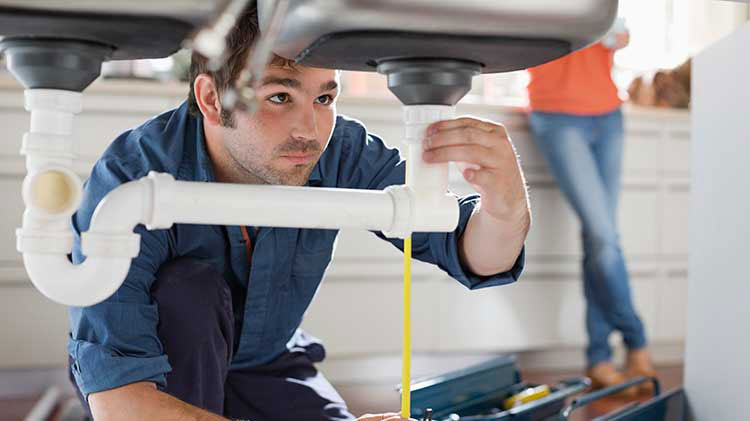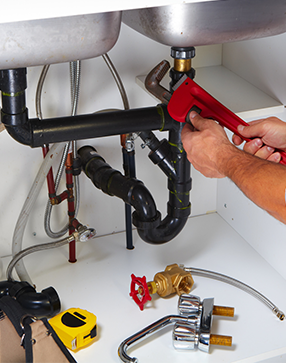What're your beliefs about How can you handle tenant plumbing issues effectively?

Taking care of plumbing problems in rental residential or commercial properties successfully is vital for preserving lessee fulfillment and protecting the building's worth. Whether you're a landlord or a building supervisor, recognizing how to deal with these common troubles can save you money and time while making certain compliance with lawful duties. Below's a detailed overview on how to manage pipes issues in rental residential properties.
Record Everything
Keep in-depth documents of all reported plumbing problems and the activities required to settle them. Documentation ought to include dates, summaries of the trouble, interaction with tenants, and receipts from professionals or plumbing technicians. This details can be crucial for insurance claims, tax deductions, and legal protection.
Use Qualified Professionals
Constantly use certified and insured experts for considerable plumbing repair services and installations. This makes sure that the job depends on code and can assist prevent obligation problems in case of mishaps or further damage. It also reassures tenants that repairs are being managed skillfully.
Establish Clear Communication
Encourage tenants to report any kind of pipes problems as soon as they occur. Provide multiple communication channels such as phone, email, or a renter site to make it simple for them to reach out. Prompt reactions to these reports can prevent small issues from escalating right into significant problems.
Educate Lessees
Inform your renters about what comprises a pipes emergency and what does not. Provide standards on exactly how to handle small problems themselves, such as using a bettor to unclog a toilet. Additionally, notify them regarding what they should stay clear of putting down drains to avoid clogs, such as oil, coffee grounds, and non-biodegradable items.
Routine Maintenance
Apply a routine upkeep routine for all plumbing systems in your leasing homes. Regular checks can assist identify and solve problems like leakages, sluggish drains, or rusty pipes before they come to be severe. Consider employing a professional plumbing technician to examine the buildings yearly or semi-annually.
Quick Feedback to Emergencies
Have a strategy in place for reacting to pipes emergencies. This must consist of having the get in touch with details of reputable pipes services that use 24/7 emergency situation repair work. Quick activity is essential to reduce damages in situations like burst pipelines or extreme leaks.
Preventive Upgrades
Think about updating older pipes systems and fixtures to much more modern-day, reliable models. This can decrease the regularity and extent of plumbing concerns and reduced long-term maintenance expenses. It's likewise a marketing factor for potential renters that value upgrades and modern-day attributes.
Tenant Move-Out Inspections
Conduct extensive pipes checks throughout move-out examinations to ensure that any problems are determined and attended to prior to a brand-new tenant moves in. This avoids conflicts with new occupants over pre-existing problems and makes sure the property is in top condition.
Understand Legal Responsibilities
Be aware of your legal responsibilities regarding plumbing and general residential or commercial property maintenance. Most jurisdictions require landlords to ensure their homes are habitable and that all plumbing systems are in good working order. Failing to resolve significant issues without delay can result in lawsuits from renters.
Lessee Compensations
If a pipes issue calls for immediate interest and the tenant solves the issue by themselves, have a clear policy in position for reimbursing expenses. Make certain tenants recognize they need to acquire prior authorization for higher-cost repair services unless it's an absolute emergency.
Verdict
Managing plumbing issues in rental buildings needs a proactive strategy and great communication with renters. By remaining on top of maintenance, responding without delay to emergencies, and using certified professionals, landlords can maintain their residential or commercial properties in excellent problem and maintain great relationships with lessees.
How to Handle Water Damage in a Rental Property
What is Water Damage?
Water damage is harm or destruction caused by water entering areas where it is not supposed to be. It can be caused by a variety of sources and can manifest in different ways. The most common examples of water damage include:
Leaking roof Plumbing leaks Appliance malfunctions Poor drainage Flooding Sewage backup Condensation Tenant negligence HVAC system issues Frozen pipes Is water damage dangerous?
Water damage itself is not inherently dangerous, but it can lead to various hazards and health risks if not promptly and properly addressed. The severity of these risks depends on the extent of the water damage, the source of the water, and how quickly it is mitigated.
Some potential dangers associated with water damage include structural damage, mold and bacterial growth, electrical hazards, water contamination, and pest infestations. In situations where mold and mildew have gone unaddressed, mold can start to develop within 24-48 hours of water exposure, and this can impose a serious health risk to tenants. In particular, mold spores and damp conditions can lead to respiratory issues and even make existing health problems worse, such as allergies, asthma, or immune disorders.
Water Damage in an Apartment - Who is Responsible?
If the water damage is caused by the tenant’s negligence, the tenant is responsible for the cost of repairs. If the water damage is caused by a defect in the property, the landlord is responsible for the cost of repairs. If the water damage is a result of natural causes, such as excessive rain, then the landlord is responsible, since the water intrusion likely occurred due to a defect in the property. Landlord Responsibility water damage in rental property
Since maintaining habitability is the landlord’s legal responsibility, landlords are responsible for any resulting structural damage caused by water damage. These structural damages may include damage to walls, roofs, ceilings, and flooring. If water damage has affected the rental property’s original structure, the landlord is responsible for repairing or replacing those materials. Therefore, landlords should have property insurance that covers the structural components of their rental property so that they can receive help with the costs of covered events.
Preventative measures can also help landlords avoid massive renovations. Preventative maintenance may include conducting regular inspections to identify and address potential water damage before it becomes a major and urgent problem.
If a landlord fails to meet their responsibilities regarding water damage, it can lead to legal disputes and potential liability. Tenants who believe their landlord is not addressing water damage issues in accordance with California law can seek legal advice or contact local housing authorities for assistance.
https://www.goodlifemgmt.com/blog/water-damage-in-a-rental-property/

We were shown that report about 10 Common Rental Property Repairs from a buddy on our other domain. In case you appreciated our blog posting please consider to pass it around. Thank you for your time. Please visit our blog back soon.